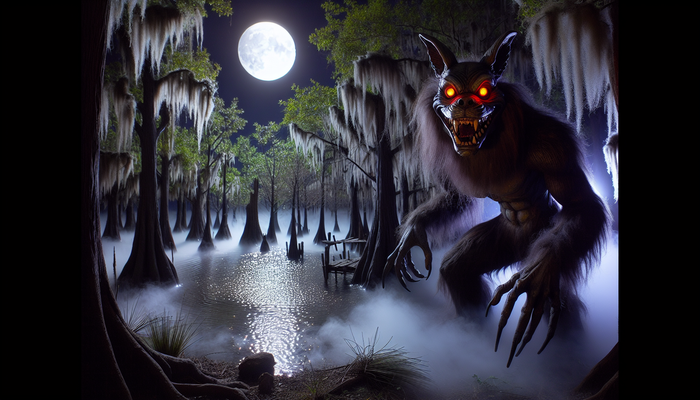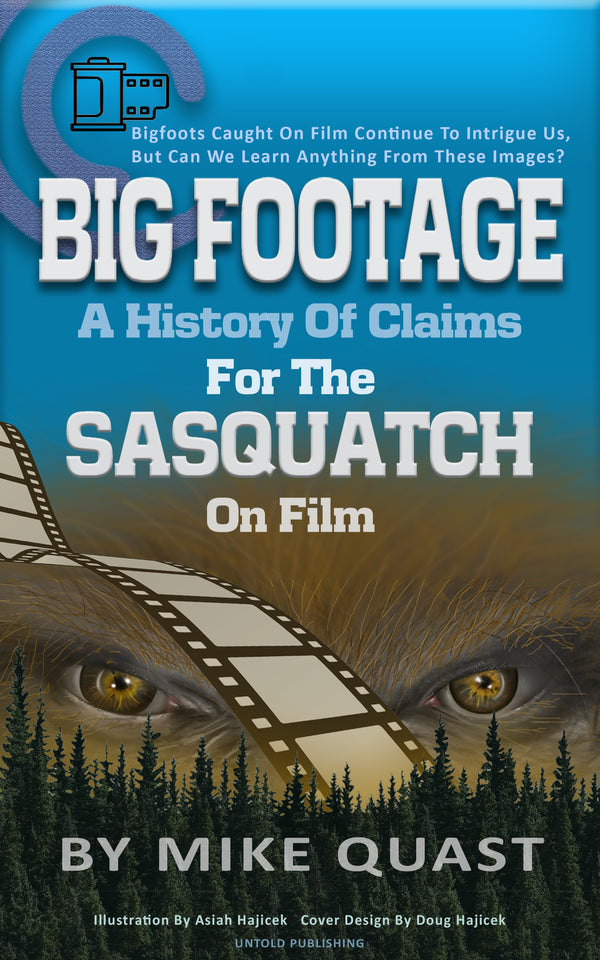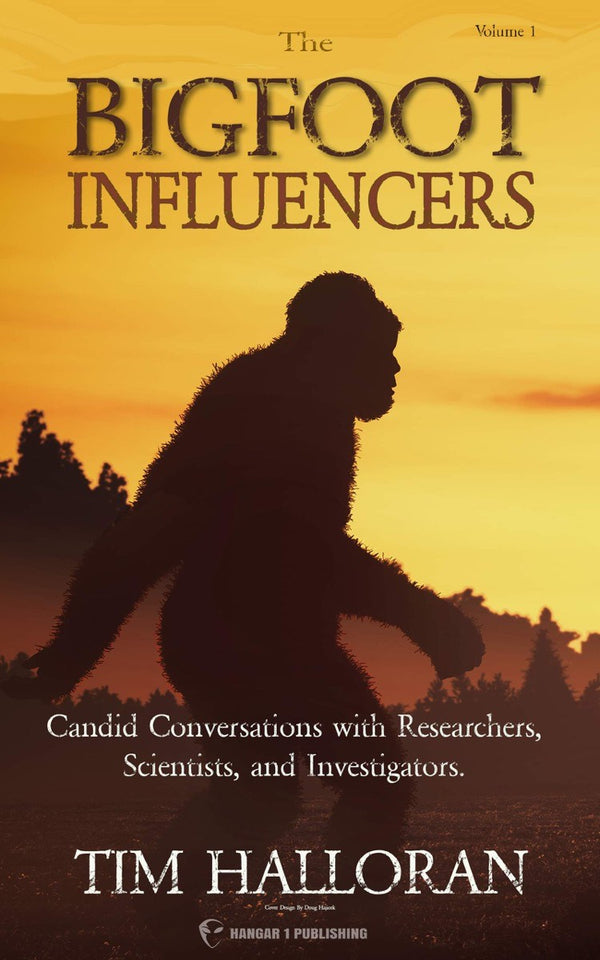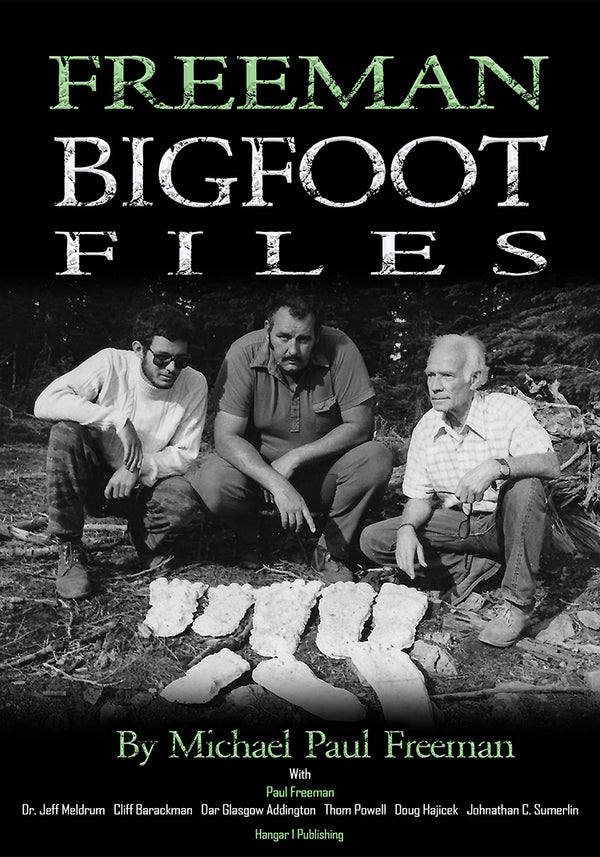Virginia's Elusive Bigfoot
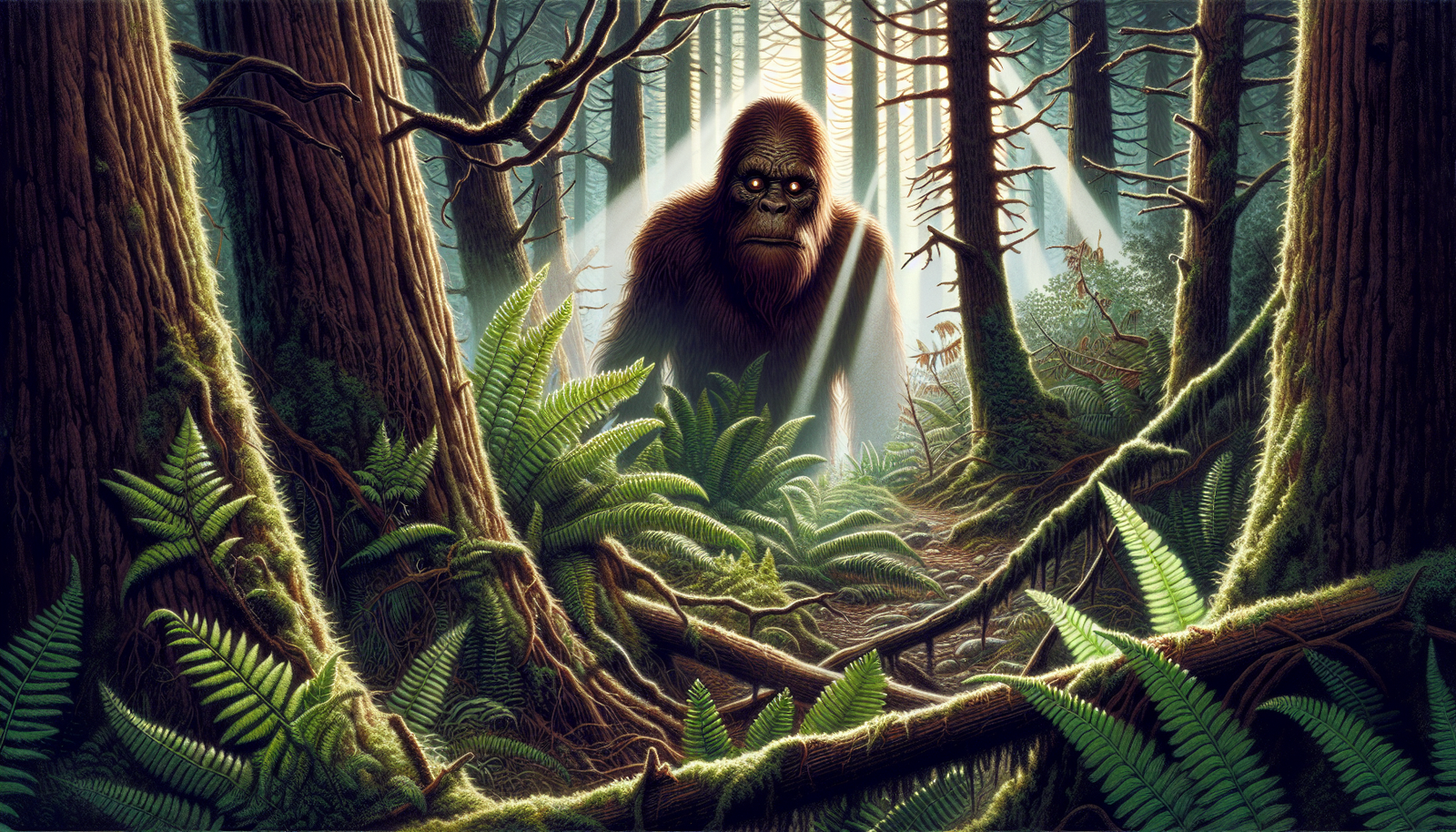
By James Roberts, Cryptozoologist
You're hiking through the dense forests of Virginia's Appalachian Mountains, the sun dappling the ground through the thick canopy above. Suddenly, you hear a rustle in the underbrush, followed by a guttural growl that sends shivers down your spine. You freeze, your heart pounding, as you catch a glimpse of a massive, hairy figure lumbering through the trees. Could it be? Is this the elusive creature known as Bigfoot?
For centuries, tales of a mysterious, ape-like being have captured the imaginations of people across Virginia. From the misty peaks of the Blue Ridge to the dark hollows of the Shenandoah Valley, reports of strange, bipedal creatures have emerged time and time again. These accounts, often dismissed as mere folklore or hoaxes, have nonetheless persisted, weaving themselves into the very fabric of Virginia's rich cultural tapestry.
As a lifelong researcher and cryptozoology enthusiast, I've made it my mission to unravel the legend of Virginia's Bigfoot. Join me as we delve into the history, eyewitness accounts, and scientific theories surrounding this enigmatic creature. Together, we'll explore the evidence, legends, and cultural significance of Bigfoot in the Old Dominion, seeking to shed light on one of the most enduring mysteries of our time.
Early Bigfoot Sightings in Virginia (1800s-1960s)
The legend of Bigfoot in Virginia stretches back centuries, with Native American tribes like the Cherokee and Powhatan telling stories of "wild men" and "hairy giants" roaming the forests. However, it wasn't until the late 1800s that the first documented Bigfoot sighting emerged in the state.
In 1879, a family in Craig County reported a chilling encounter with an 8-foot tall, hairy visitor peering through their kitchen window during a gathering. The incident, which set the stage for future sightings, was just the beginning of a long history of Bigfoot encounters in Virginia.
As the 20th century dawned, loggers and hunters in the western mountains began reporting their own brushes with the mysterious creature. In the 1950s and 60s, these accounts became more frequent, with witnesses describing large, bipedal creatures that defied explanation. One particularly notable incident occurred in 1960, when a bread truck driver in West Virginia claimed to have seen a 7-foot tall "ape-man" crossing a bridge in front of his vehicle.
Another intriguing case emerged in 1978, when a Marine stationed at the Quantico Military Base reported seeing a large, hairy creature standing in the moonlight near an ammunition storage area. This sighting, one of the few documented by military personnel, added an extra layer of intrigue to the growing Bigfoot legend in Virginia.
As the decades passed, the Bigfoot phenomenon continued to gain traction, with sightings popping up across the state. Little did Virginians know that the Bigfoot boom was just around the corner, and that their encounters with the elusive creature would soon capture the attention of the entire nation.
The Bigfoot Boom: Sightings Across Virginia (1970s-1990s)
As the 1970s rolled around, the Bigfoot phenomenon exploded into the mainstream consciousness. Suddenly, it seemed like everyone was talking about the elusive creature, and Virginia found itself at the center of the Bigfoot boom.
Sightings were reported in numerous counties across the state, from Roanoke and Franklin to Amherst and Giles. Witnesses described massive, ape-like creatures that stood between 6 and 10 feet tall, with broad shoulders, long arms, and shaggy, dark fur. Many reported hearing strange vocalizations, like blood-curdling screams and deep, guttural growls that echoed through the forests.
One particularly compelling account came from a hunter in Franklin County in 2004. While riding his ATV through the woods, he spotted a large, reflective creature that he initially mistook for a black turkey. As he approached the area, he heard something massive crashing through the trees, followed by two loud bangs that sounded like a stick being hit against a tree. The hunter also reported that nearby deer began snorting and stomping, seemingly in response to the creature's presence.
Stories like these captured the public's imagination, fueling a growing fascination with the Bigfoot mystery. Researchers and enthusiasts flocked to Virginia, hoping to catch a glimpse of the creature or uncover evidence of its existence. As the 20th century drew to a close, the stage was set for a new era of Bigfoot investigation, one that would bring the legend of Virginia's elusive beast into the modern age.
Modern Bigfoot Hotspots and High-Profile Encounters (2000s-Present)
As the new millennium dawned, Virginia's Bigfoot legend showed no signs of slowing down. In fact, the 2000s and 2010s saw the emergence of new hotspots for Bigfoot activity, as well as a series of high-profile encounters that thrust the creature back into the national spotlight.
One of these hotspots was Spotsylvania County, where residents reported a string of sightings in the early 2000s. Another was Hungry Mother State Park, where visitors claimed to have seen a large, hairy, man-shaped creature lurking in the woods in 2006. That same year, a group of canoeists at the park reported seeing a Bigfoot-like creature moving up a hillside, adding to the growing body of eyewitness accounts.
Perhaps the most famous modern Bigfoot encounter in Virginia occurred in 2019, near the New River Gorge region. A husband and wife claimed to have photographed a massive, 8-to-9-foot tall creature with a cone-shaped head, barrel chest, and muscular limbs. The story quickly went viral, sparking a renewed interest in the Bigfoot phenomenon and drawing researchers and curiosity-seekers from across the country.
As the 21st century progresses, it's clear that the legend of Virginia's Bigfoot is far from over. With new sightings reported every year and a growing community of dedicated researchers and enthusiasts, the hunt for the elusive creature continues, driven by a deep-seated fascination with the unknown and a desire to unravel one of the greatest mysteries of our time.
Bigfoot Research and Investigation in Virginia
As the Bigfoot phenomenon has grown in Virginia, so too has the community of dedicated researchers and investigators seeking to unravel the mystery of the elusive creature. Leading the charge is the Virginia Bigfoot Research Organization (VBRO), founded in 2005 by Bill Dranginis, a former military intelligence officer and surveillance expert.
The VBRO has been at the forefront of Bigfoot research in the state, employing advanced technology like thermal cameras and motion-sensor cameras to gather evidence of the creature's existence. Dranginis and his team have conducted numerous expeditions into Virginia's forests and mountains, meticulously documenting eyewitness accounts and collecting physical evidence like footprints and hair samples.
Other research groups, like the East Coast Bigfoot Research Organization and Sasquatch Watch of Virginia, have also played a vital role in investigating the Bigfoot phenomenon. These organizations have organized their own expeditions, set up surveillance equipment, and worked tirelessly to gather evidence and build a case for the creature's existence.
In 2014, the Bigfoot research community in Virginia reached a major milestone with the first-ever Virginia Bigfoot Conference, held at Hungry Mother State Park. The event brought together leading researchers from across the country, including Bill Dranginis of the VBRO, who shared their findings and theories about the elusive creature.
The conference was a testament to the growing interest in the Bigfoot phenomenon, not just in Virginia but across the United States. It also highlighted the dedication and passion of the researchers and investigators who have made it their life's work to unravel the mystery of this enigmatic beast.
As the search for Bigfoot continues, the work of these tireless investigators and researchers will undoubtedly play a crucial role in shedding light on one of the greatest cryptozoological mysteries of our time. Whether through the use of cutting-edge technology or good old-fashioned fieldwork, these intrepid explorers are at the forefront of the quest to prove, once and for all, that Bigfoot is more than just a legend.
Bigfoot in Virginia's Culture and Community
Beyond the realm of scientific investigation, the legend of Bigfoot has become deeply ingrained in Virginia's culture and community. From festivals and events to museums and local folklore, the elusive creature has captured the imaginations of Virginians young and old, becoming an integral part of the state's rich cultural heritage.
One of the most prominent examples of this is the annual Wood Booger Search Event in the town of Norton. The festival, which takes its name from the local legend of the "Wood Booger" in the High Knob area, celebrates all things Bigfoot, with guided hikes, storytelling sessions, and even a Bigfoot calling contest.
Elsewhere in the state, museums and attractions have sprung up to showcase Virginia's Bigfoot legacy. The West Virginia Bigfoot Museum in Sutton, just across the border, boasts an impressive collection of Bigfoot artifacts and memorabilia, while the Reynolds Homestead in Patrick County features Bigfoot-themed exhibits and events.
But perhaps the most powerful testament to Bigfoot's place in Virginia's culture is the way in which the legend has been embraced by local communities. Across the state, residents share stories of their own encounters with the creature, passing down tales from generation to generation. Many even participate in search efforts, joining researchers and investigators in the quest to uncover evidence of Bigfoot's existence.
This deep-seated fascination with the Bigfoot legend is a reflection of Virginia's unique cultural landscape, one that is steeped in history, folklore, and a profound connection to the natural world. Whether viewed as a mysterious creature to be feared or a benevolent guardian of the forests, Bigfoot has become a symbol of Virginia's enduring spirit of exploration and wonder.
As the search for the elusive creature continues, one thing is certain: the legend of Bigfoot will continue to shape Virginia's cultural identity for generations to come, inspiring new tales, new adventures, and new generations of believers and skeptics alike.
Regional Variations and Native American Connections
One of the most fascinating aspects of the Bigfoot legend in Virginia is the way in which it has been shaped by regional variations and Native American folklore. Across the state, the elusive creature is known by a variety of names, each reflecting the unique cultural and historical context of the area in which it is found.
In southwestern Virginia, for example, Bigfoot is often referred to as the "Old Man of the Mountain" or the "Beast of Gum Hill." These names evoke a sense of the creature's ancient, almost mythical nature, as well as its deep connection to the rugged, mountainous landscape of the region.
Elsewhere in the state, Bigfoot goes by other names, like the "Wood Booger" in the Norton area or the "Skunk Ape" in the southern regions near the Great Dismal Swamp. These regional variations reflect the creature's integration into local folklore and culture, as well as the diverse range of experiences and encounters that have shaped its legend over time.
Interestingly, some of these regional variations also hint at differences in the creature's appearance and behavior. In southwestern Virginia, for example, Bigfoot is often described as more docile and less aggressive than its counterparts in other parts of the country. Witnesses have reported seeing the creature interacting with deer and even engaging in seemingly playful behaviors like rock-throwing.
But perhaps the most intriguing aspect of Virginia's Bigfoot legend is its deep connection to Native American mythology and folklore. For centuries, tribes like the Algonquian and Sioux have told stories of large, hairy, humanoid creatures roaming the forests of what is now Virginia. These creatures were known by names like "Nun Yunu Wi" (Stone Man) and "Kecleh-Kudleh" (Hairy Savage), and were often depicted as powerful, almost supernatural beings.
These ancient tales have played a crucial role in shaping the modern Bigfoot narrative in Virginia, providing a rich cultural and historical context for the sightings and encounters that have been reported over the years. They also serve as a reminder of the deep, enduring connection between the natural world and the human imagination, and of the power of folklore and legend to shape our understanding of the mysteries that surround us.
As we continue to explore the legend of Virginia's elusive Bigfoot, it is important to keep these regional variations and Native American connections in mind. They provide a vital key to unlocking the deeper meanings and significance of this enduring mystery, and to understanding the creature's place in the larger tapestry of Virginia's cultural heritage.
Skepticism, Hoaxes, and the Search for Evidence
Despite the countless eyewitness accounts and the tireless efforts of dedicated researchers, the existence of Bigfoot remains a topic of intense debate and skepticism within the scientific community. For every compelling piece of evidence or convincing encounter, there are those who dismiss the legend as nothing more than a product of overactive imaginations, misidentification, or outright hoaxes.
One of the main reasons for this skepticism is the lack of conclusive physical evidence. Despite decades of searching, no one has yet managed to produce a body, a complete skeleton, or even a clear, unambiguous photograph or video of the creature. This absence of hard proof has led many scientists to question whether Bigfoot is anything more than a modern myth.
Another factor fueling the skepticism surrounding Bigfoot is the prevalence of hoaxes and fabricated evidence. Over the years, there have been numerous instances of individuals claiming to have captured the creature on film or stumbled upon its remains, only to be exposed as frauds or pranksters. These hoaxes, often perpetrated by those seeking fame or fortune, have done much to undermine the credibility of the Bigfoot legend and the efforts of serious researchers.
Yet despite the challenges and the skepticism, there are those who remain convinced that Bigfoot is a real, flesh-and-blood creature roaming the forests of Virginia and beyond. They point to the sheer volume and consistency of eyewitness accounts, the numerous footprints and other physical traces left behind, and the vast, unexplored wilderness areas that could easily harbor an undiscovered species.
Indeed, when one considers the rugged, heavily forested terrain of Virginia's mountains and valleys, it is not difficult to imagine a creature like Bigfoot evading detection for centuries. With its dense canopy, remote hollows, and vast stretches of uninhabited land, the Virginia wilderness provides an ideal habitat for a large, elusive primate species.
Moreover, the consistency and detail of many Bigfoot sightings in Virginia suggest that there may be more to the legend than mere folklore or misidentification. From the recurring descriptions of the creature's appearance and behavior to the geographic clustering of sightings in certain hotspots, there are patterns and trends that hint at the possibility of a genuine biological phenomenon.
From Bigfoot to UFOs: Hangar 1 Publishing Has You Covered!
Explore Untold Stories: Venture into the world of UFOs, cryptids, Bigfoot, and beyond. Every story is a journey into the extraordinary.
Immersive Book Technology: Experience real videos, sights, and sounds within our books. Its not just reading; its an adventure.






